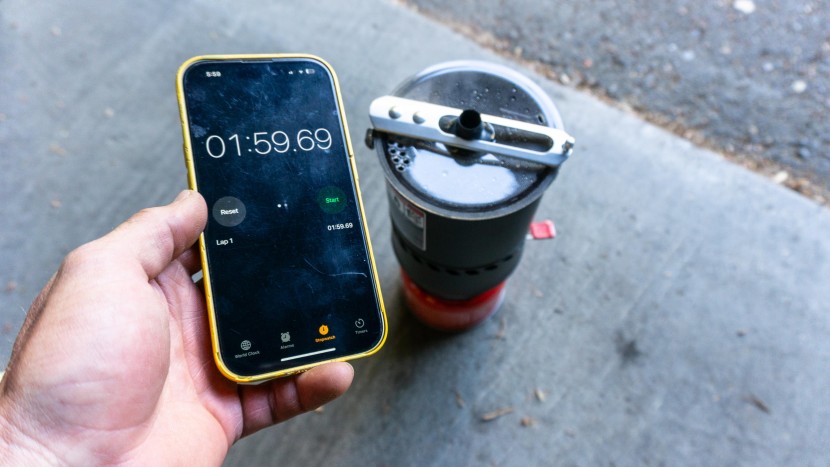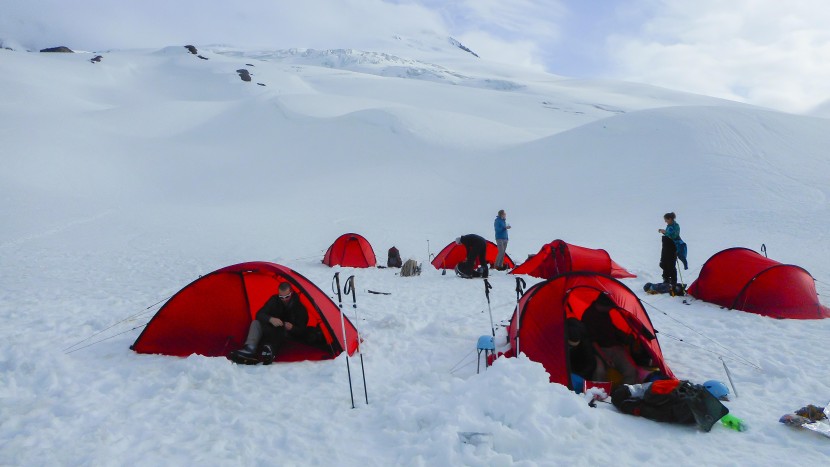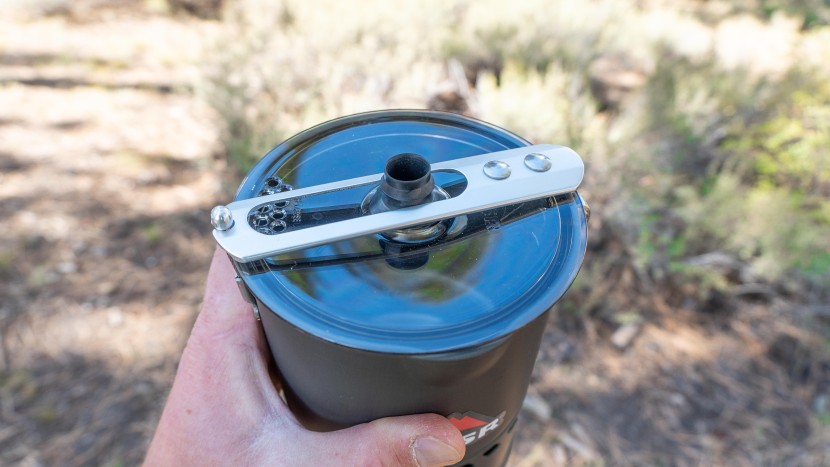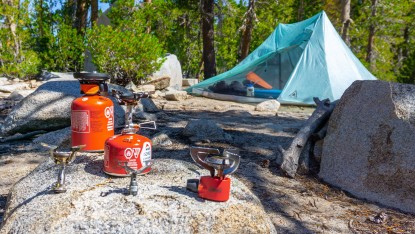
Our Verdict
Our Analysis and Test Results
MSR really hit the nail on the head when they named this stove the Reactor. From the moment you fire up the stove, you'll experience lightning-fast boil times and faster snow melt than any other option. This model is heavy, but winter camping and high-altitude adventuring sometimes require foregoing the lightest equipment for better performance.
Fuel Efficiency
This stove isn't quite as fuel-efficient as others we tested, but given how much heat it produces and how quickly it melts snow, some will find its fuel efficiency just fine. For wintry trips, we've found that we aren't always counting grams when it comes to something as essential as a stove system, and extra fuel is a must-have in such environments, regardless of efficiency.
The Reactor burns about .25 ounces of fuel to raise .5 liters of water to a boil, which we confirmed multiple times in lab testing. In the field, we found similar results, but as we got to higher altitudes, its efficiency remained stable. While other models began to decrease in fuel efficiency in colder and higher environments, the Reactor kept purring along. For shorter trips or on-the-go missions from basecamp, this stove will need more fuel than others, but for its intended uses (serious mountain adventures), you're likely to be happy with its heat output and rapid boil times.
Weight
This burly stove was never designed to be a featherweight option for thru-hiking in temperate climates. It was meant to be trusted when your life depends on a functional stove, and as such, it's a heavier-duty model that scored lower for its weight.
At a chunky 15.1 ounces, this is a fairly heavy stove for everyday use. Fortunately, our whole testing team found that its heavier weight offered better durability and better performance in extreme conditions. MSR also did a great job making this option fairly packable, with the burner fitting inside the pot easily, along with a small can of isobutane.
Simmering Ability
While there are several stoves that are only meant for boiling water, the Reactor is truly the example of a stove that is either on or off. Yes, you can certainly keep a pot or skillet higher above the radiant burner, but its heat output will remain relatively high.
The reason this stove is so ideal for cold and windy places is largely due to how hot it gets. Unfortunately, this creates a necessary trade-off: reduced simmering capabilities. We've found that expeditions are best served by bringing multiple stoves and were happy with the Reactor as the on-route or “mission” stove, while we had a more versatile stove at basecamp. Alternatively, for adventures closer to home, we were happy to use the Reactor for freeze-dried dinners and breakfasts.
Wind Resistance
The Reactor really shines in windy environments, which is very common when camping in more exposed places. Our team has collectively been using some version of the Reactor for years and we've grown to love its dependability at exposed bivouacs and tent sites.
Throughout testing, we found a very minor decrease in performance when comparing the Reactor's fuel efficiency and boil times between exposed and sheltered locations. Its integrated pot sculpts the top of the radiant burner very well, offering some protection from the elements. However, we attribute the majority of its wind resistance to its sheer heat output, with a burner several times larger than some of the competition.
Ease Of Use
While all isobutane stoves offer a similarly simple experience, the Reactor was trickier to use because of its more exposed metal, making it easier to get burned. While other options use neoprene or some sort of cozy pot wrap, this option's bare-bones design requires the utmost attention to your puffy jackets and bare skin.
In addition to the exposed metal, the Reactor has one crucial design setback: its pot doesn't lock to the burner unit. While many models don't have a burner lock, the Reactor was designed for use in unconventional camp locations, such as a rocky ridge or a glacier, where uneven ground is common, so it would be nice if it locked on.
We also wish that a cold-weather stove like this had a larger valve control for gloved hands. While these gripes were shared across our review team, we were still able to make this stove work well where it counted, and MSR nailed the partially integrated lid, which has the best locking system of any integrated canister in our review.
Should You Buy the MSR Reactor?
If you need the highest-powered integrated canister stove available, look no further. This thing runs hot no matter what, it's fairly packable, and is wind's formidable opponent. While it isn't as versatile as some of the competition, adventure-seekers who need something trustworthy in extreme environments will be happy with the Reactor's performance when their survival depends on it. If you just take a few casual low-altitude backpacking trips a year, we'd steer you in another direction.
What Other Backpacking Stoves Should You Consider?
If you're needing something that can be used year-round and offers a more user-friendly experience, consider the MSR Windburner, which many of us consider to simply be a lighter-duty Reactor. For a stove that's better suited for a basecamp setup, the MSR XGK EX is a fantastic liquid fuel model that still boasts top-notch wind resistance and reliability. If you're a casual backpacker and want an integrated canister stove, but are looking for something a little more all-around, check out the JetBoil MiniMo.











